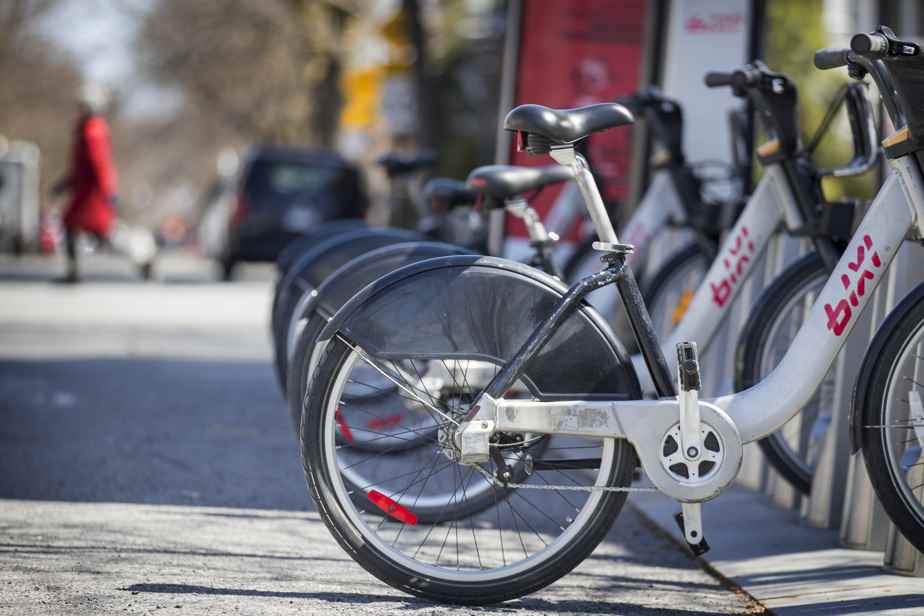Despite eloquent usage data as winter approaches, BIXI Montreal will close the books again on November 15 this year. The idea of a winter season for self-service bicycles (VLS) is gaining ground, but there are still too many “important details to tie up” with the City, according to the organization.
Posted at 5:00 a.m.
Since the beginning of November, open data from automatic counters has reported tens of thousands of BIXI trips every day. On Tuesday, there were almost 30,000, and the day before, more than 31,000. At the beginning of the month, peaks were even reached with more than 41,000 self-service bicycles on the roads of the metropolis. In August, at the height of the summer season, there were approximately 50,000 daily trips, on average, official BIXI figures show.

November’s open data figures come as the weather cools and, more importantly, as the tourist season is over, prompting observers to say that it is now more than urgent to extend the BLVs during the winter season, especially since bike paths like the Réseau express vélo (REV) are cleared of snow all winter long.
“This year, BIXI is reaching usage levels in November similar to the levels of June and July last year. We can’t wait for a BIXI pilot project all year round,” said Chris McCray, a climate scientist and professor at McGill University, this week.
Extending BIXI services beyond November 15 has been debated for several years in Montreal. In 2020, the organization’s general manager, Christian Vermette, said that the 2021-2022 winter season could be the right one, but that never happened.
other priorities
Joined by The Press, BIXI Montreal spokesperson Bérengère Thériault says that “the electrification of the network and the addition of electric bicycles have been the priority in recent years”. “The possibility of offering the service 12 months out of 12 is, however, one of the priority issues, and is part of the City’s and BIXI’s desire to offer an ever more accessible service for citizens,” she lists. .
“Unfortunately, this will not take place this winter, as there are still important details to tie up before we can go ahead with this project. However, we are working with the City to ensure that the project materializes, ”insists Mme Theriault.
In the office of Mayor Valérie Plante, we also mention the fact that certain “details” remain to be clarified. “Regarding the possibility of making BIXIs available year-round, there are still important details to be clarified, but we believe in it,” says mobility manager Sophie Mauzerolle.
We can think of the maintenance required to ensure safe travel, snow removal from stations, the territory covered, the costs involved, among others. However, we are actively working with our partner to make this project possible.
Sophie Mauzerolle, responsible for mobility, City of Montreal
The president and general manager of Vélo Québec, Jean-François Rheault, is of the opinion that the process must be accelerated. “Next year’s winter, we have to at least go with a pilot project, maybe with fewer stations or smaller coverage, but it would be worth trying. That would be a good target to set. The advantage with BIXI is that we have the data to see which stations are used the most, especially near public transit,” he points out.
“Otherwise, it would be desirable to extend the season at least a little. We understand that there are significant operational challenges, but we have to rely on the idea of adapting intelligently. This technology, as we know, is also used in winter, as the city of Toronto has already done, continues Mr. Rheault. We have reached a point where we have to find a solution. At some point, you’re going to have to take a risk, in quotes. »
The double in Longueuil
To “encourage active travel” all year round, Longueuil announced Thursday that it will clear snow this year about 60 kilometers of bike paths on its territory, double what was done during the last season. The City intends to increase the pace in the coming years, to reach approximately 120 kilometers by 2025.
Since last year, the municipality’s “white network” already totals 27.5 kilometers of cycle paths. In 2020, before the arrival of the Fournier administration, only 5 kilometers were plowed. The network will benefit this year from an addition of 32 kilometers of snow-cleared lanes. In 2023-2024, we plan to add an additional 17.5 kilometres, as in 2024-2025.
In 2025-2026, the City will add 22 kilometers for winter cyclists, who are more and more numerous in Quebec. Within four years, Longueuil will therefore have 116.5 kilometers of snow-cleared cycle paths. More than half of the tracks have so far been reserved for bicycles.
As of this season, several major cycle paths will be cleared of snow, including the paths located on their own site and separated from traffic on Roland-Therrien and Jacques-Cartier boulevards, in Vieux-Longueuil. The Edna-Maricourt footbridge, which passes over Route 112-116 in Saint-Hubert, will also be cleared of snow.

